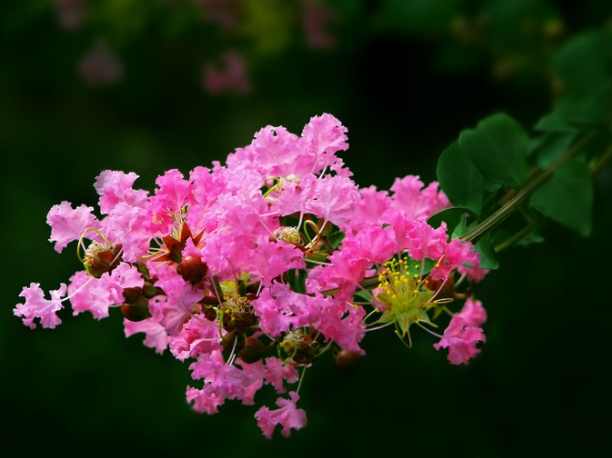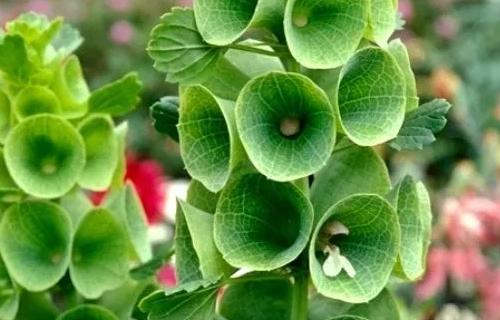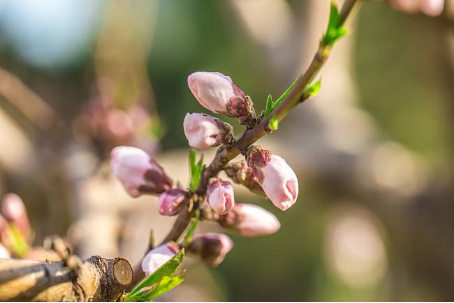Flowering maintenance of crape myrtle
1. Fertilization
Lagerstroemia flower flowering needs sufficient nutrient supply, so at this time must be fertilized before flowering, so as to ensure that the color is more beautiful, open more flowers. If no fertilization is carried out, the number of flowers will be reduced and the viewing period will be shortened.

2. Light
Crape myrtle flowers like sufficient light, so flowering must be placed in a place with sufficient light maintenance, insufficient light can easily lead to excessive growth of plants, less flowering, flowers will soon wither after flowering, affecting the viewing effect, but also not conducive to the normal growth of crape myrtle flowers.
3. Watering
Lagerstroemia in the growth period, watering is generally dry irrigation, but in Lagerstroemia flowering is not the case, must keep the soil moist, because Lagerstroemia flowering is in the summer, the temperature is relatively high, water evaporation faster, so basically every day need watering, in watering when it is recommended to use a watering can, so that the water will be more uniform, Lagerstroemia flowers will be better absorbed.
Crape myrtle flower after flowering can not only appreciate, but also pay attention to maintenance in order to make flowers bloom better oh! Like the above content, pay attention to the Four Seasons Plant Internet Cafe!
Conservation of Lagerstroemia flower
Ziwei
Crape myrtle is a deciduous tree, also known as itch tree.
Lagerstroemia is a small tree, originating in China, is a long-lived tree species with strong adaptability. Crape myrtle flower is the flower of Anyang City and Xiangyang City because of its low tree type, so it is very suitable as garden ornamental tree and street greening tree. Crape myrtle has been cultivated for thousands of years in China. It was planted in Chang 'an court in Tang Dynasty. In recent centuries, it has been introduced to all parts of the world. Westerners found this tree from India, so they called it "Indian clove" in French.
Beautiful tree, smooth bark, twisted branches. Summer flowering, colorful, luxuriant flowers, flower shape strange, corolla soft, petals edge shrinkage, like pieces of powder clouds, swaying with the wind, suitable for garden planting or bonsai.
The cultivated varieties of Lagerstroemia are divided into Yinwei (white), Cuiwei (purple), Hongwei (red) and Lagerstroemia (pink) according to different colors.
Anti-sulfur dioxide (SO2), fluoride complex (HF), chlorine (Cl2) and other harmful gases.
(1)Growth characteristics: crape myrtle is adaptable, likes warm and humid climate, likes sunshine and bears shade, has certain cold resistance and drought tolerance. It grows well on fertile soil with good drainage, and it can grow normally even if the soil is slightly worse.
(2)Propagation methods: commonly used seeding and cuttage method.
① Sowing: Collect capsules from October to November, dry and rub seeds, and sow them in early spring. Keep the soil moist during the seedling growth period. When the seedling height is 10 ~ 15 cm, apply thin fertilizer once every 15 ~ 20 days, apply calcium superphosphate once after planting, and properly manage it in fertile nursery land. The seedling can bloom in the second year.
② Cutting: Select 1 ~ 2-year-old vigorous branches before spring germination, cut off about 15 ~ 20 cm long ears and insert them into loose and fertile seedbeds. Pay attention to heat preservation after insertion. Annual seedlings are about 50 cm tall.
(3)cultivation and management
① Planting:2 ~ 3-year-old seedlings can be planted, the time in March to early April, re-cut before planting, leaving only 2 buds on the ground to promote strong roots and cultivate trunk. Plants should be transplanted with soil balls.
② Watering and fertilization: water 1 ~ 2 times before germination in spring, and keep the soil moist throughout the production season. Apply base fertilizer heavily in early spring, apply topdressing in May to June to promote flower bud growth, and apply fertilizer again after defoliation.
③ pruning and modeling: cut off long and uneven branches in time to keep the full crown and full of flowers.
The branches of Lagerstroemia indica are flexible and easy to shape. When the sap flows in spring, several branches of Lagerstroemia indica are twisted together to form twisted wood, vase, memorial archway and other shapes. The branches can heal together after 2 ~ 3 years of twisting. Cutting off the cortex at the point of contact between branches can promote healing. If only mixed bud, can form a single stem Lagerstroemia, suitable for street trees.
④ Pest control: Common soot disease, internal mealy disease and scale insects.
Care of the flower cautions
I. Watering
Crape myrtle potted at home also needs to receive sunlight similar to that outside, and generally does not need shade even in high temperature environments.
Cultivation location should be chosen as far as possible away from the wall of the brick and soil on the ground, in case the wall ventilation is not smooth and raise the temperature of the small environment, the growth of Lagerstroemia.
The watering of the four seasons should follow the principle of "no watering, no watering, watering thoroughly". The specific watering amount should be determined according to the actual wetness of the basin soil. If the basin soil leaks, it should be supplemented in time to increase the density of the basin soil.
Spring budding period, summer budding period and flowering period should be topdressing fertilizer, late autumn to early spring next year to control water, try to keep the pot soil dry.
II. Cutting
Specifically divided into softwood cuttings and hardwood cuttings two kinds. Generally in the plum rainy season for softwood cuttings, in the spring for hardwood cuttings, survival rates are good.
Cuttings should be selected in the vigorous growth of the mother plant on the annual thick solid strong branches, pruning for about 10-15 cm long branches, cutting depth of about 8-10 cm is good.
Usually after about 20 days can take root, to carry out appropriate shading and moderate watering, branch survival rate is high, that year can grow to about 60-80 cm.
III. florescence aspect
Crape myrtle has a strong ability to grow branches and a large number of long shoots, so it is necessary to cut off the residual flowers after flowering, promote the new hair of the plant, and make the next round of flowering as soon as possible, so as to prolong the flowering period.
At the same time, it is necessary to cut off excessive branches, diseased branches, stacked branches and interspersed branches in time to prevent excessive consumption of nutrients.
IV. Fertilization
The base fertilizer should be applied to Lagerstroemia lagerstroemia in pot culture, and the top fertilizer can be applied before the germination of new branches or between May and June, less in autumn and no in winter.
In addition, summer high temperature weather and rainy weather should not be fertilized, other time fertilization should follow the "thin fertilizer and frequent application" criteria.
Excess fertilizer is easy to make branches and leaves grow excessively, too little fertilizer is easy to make branches thin and weak, leaves yellow, serious whole plant growth weakness, few flowers or no flowers.
v. soil replacement
Potted crape myrtle is best replaced every 2-3 years.
Cultivated soil can be prepared by mixing loose mountain soil: pastoral soil: fine river sand (5:3:2), and organic fertilizer (bone meal, bean cake powder, etc.) can be selected as base fertilizer.
Pay attention to avoid direct contact between roots and fertilizer, otherwise it will burn roots and harm the normal growth of plants.
- Prev

Matters needing attention in the culture of shell flowers
It is necessary to pick the heart in the growth process of the shell flower in order to have more branches and shape a certain shape. Diseases and insect pests shellfish peanut is relatively strong, diseases and insect pests are still relatively few, but sometimes there will be harm from leaf miners, so it is necessary to often observe the growth of plants, find diseases in time, and carry out prevention and control.
- Next

How to make Peach Blossom Bonsai
In the production of ornamental peach blossom bonsai, first of all, in modeling, reasonable pruning should be carried out according to the growth of plants, to ensure that the twists and turns of the branches are different, but also to remove messy branches in time to maintain the beauty of the bonsai. Plastic surgery is also essential, but also according to the needs of some small accessories in the basin.
Related
- Fuxing push coffee new agricultural production and marketing class: lack of small-scale processing plants
- Jujube rice field leisure farm deep ploughing Yilan for five years to create a space for organic food and play
- Nongyu Farm-A trial of organic papaya for brave women with advanced technology
- Four points for attention in the prevention and control of diseases and insect pests of edible fungi
- How to add nutrient solution to Edible Fungi
- Is there any good way to control edible fungus mites?
- Open Inoculation Technology of Edible Fungi
- Is there any clever way to use fertilizer for edible fungus in winter?
- What agents are used to kill the pathogens of edible fungi in the mushroom shed?
- Rapid drying of Edible Fungi

